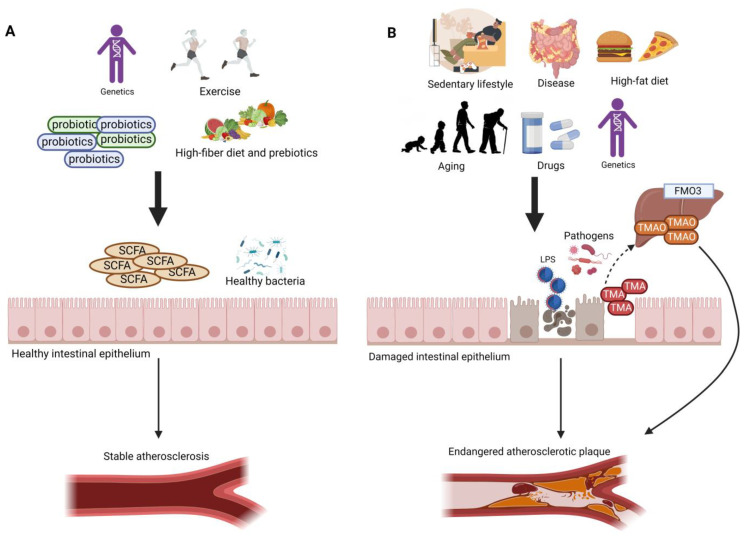Figure 1.
Different factors, such as the gut microbiome, diet, lifestyle, and genetics, play a major role in the development of atherosclerosis. (A) High-fiber diet, active lifestyle, and the intake of probiotics increase the abundance of beneficial gut bacteria and the amount of SCFAs, which support the tight junctions and protect the intestinal epithelium, thus preventing harmful metabolites from entering the circulation. This contributes to a stable atherosclerotic plaque. (B) High-fat diet, sedentary lifestyle, intestinal disease (e.g., Crohn’s disease, irritable bowel disease), the intake of different drugs (e.g., antibiotics), and aging lead to a disruption in the gut microbial profile, resulting in higher abundance of pathogenic bacteria and lower amounts of SCFAs. These effects lead to damage in the gut epithelium; thus, a leaky gut allows the translocation of LPS, TMA, and other damaging metabolites into the circulation. High amounts of plasma LPS and TMAO result in an endangered atherosclerotic plaque.

